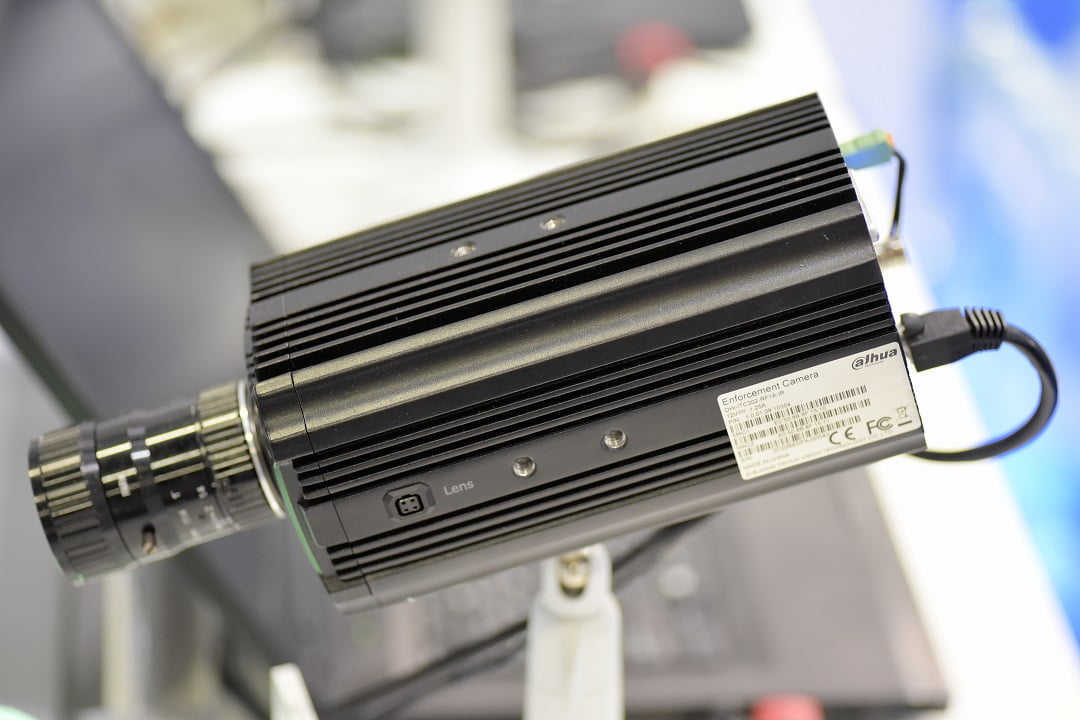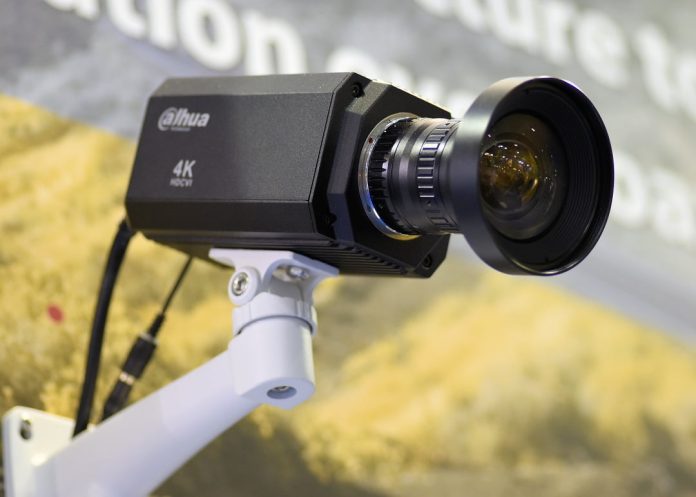MOST cameras have resolutions of at least 720p and some are 29MP, while sensor sizes are growing – the 1/3-inch sensor is too small for megapixel performance. The changes mean installers can’t go for the lowest cost lenses but getting megapixel lens selection right is a challenging business.
THERE’S more to think about than focal length with megapixel camera lenses. You need to consider lens resolution, iris control, aperture, IR capability, depth of field, as well as sensor size. As well as fundamentals, there are more nebulous considerations, including the quality of the lens. This is much tougher to pin down than you’d think.
Manufacturers of high-resolution CCTV cameras always seem to install pro-grade consumer lenses worth thousands on them – why? Many modern CCTV lenses are made of plastic, not glass, and despite their apparently equal high specifications, some types of lenses perform better than others on objective tests due to aberrations specifications cannot show. That means you need to test lens types – you can’t just buy a lens with the right specification and kid yourself it’s the best of the best.
Do MP lenses matter? You sometimes hear people say that the highest MP camera sensors have ‘out-resolved’ the lenses installed on them, but this is difficult to test accurately and there’s a degree of subjectivity that is inevitable relating to human ocular acuity. Something else to bear in mind is that mid-quality lenses are not built to support the maximum resolutions of the highest resolution sensors.
Certainly, when it comes to smaller format sensors, cameras can be limited by lens resolution. At the same time, however, a smaller lens allows applications that are closer to the diffraction limit in low light applications because smaller lenses can be more easily corrected. This is advantageous in the real world. In comparison, larger format sensors of 2/3-inch and 1-inch are much closer to the diffraction limit and are harder to correct.
Something else to bear in mind at the cutting edge of sensor and lens performance is that photon shot noise is still going to present an insuperable performance barrier to a CCTV camera’s absolute performance. Then there’s the circle of confusion (CoC)– the point at which the human eye can no longer resolve detail.
Just to complicate matters, more recent thinking suggests the CoC has been greatly exaggerated and the human eye is a much better instrument than was thought. In the past it was considered humans could not resolve more detail than 7 lines per millimetre, but it’s now thought the eye can handle 14 lines per millimetre, or even more. In any case, detail in a scene is never about a single bright or dark spot on a screen – it’s about collections of details.
Factors to Consider
Lens-mount type is less of an issue than it used to be. Most CCTV cameras use a CS-type lens mount and there are adaptors if required. Another key consideration is lens size, which needs to be properly matched to sensor size. If the lens is too small there will be a black ring around a scene. From the point of view of installers, lens diameter needs to be the same size as the sensor, or larger. Typical CCTV camera sensors can be ¼-inch, ½-inch, 2/3-inch, and even 1-inch, in the case of GBO’s S1080.
Varifocal lens options need to be considered carefully. These aren’t like zoom lenses which automatically adjust the magnification they give to light reaching the sensor. Instead they need to be focused manually. Just like the human eye, the iris controls the level of light that reaches the sensor. There are a range of iris types available from manufacturers. Some cameras are fixed iris, some are manual, some are automatic and some are p-iris. You need to match camera and lens types. Typically, you use fixed and varifocal types where light levels are constant. Outside you need auto iris types.
Then there’s depth of field. This is controlled by the size of the iris – the smaller the iris the more foreground and background is visible in a scene. But make the iris too small and it’s time for a little diffraction – which will hamper image quality. When a lens opens in low light it reduces its depth of field. Meanwhile, P-iris lenses are designed to use the lens iris, software and camera gain to tweak the image depending on light levels. This works well in bright light where a standard auto iris would close down, leading to blurring of the image. Conversely, in low light, a p-iris will limit opening and increase camera gain to retain as much depth of field as possible.

Aperture defines the level of light that a given lens can pass to the sensor as its f number. The lower the number, the greater the light level that can travel through the lens to the sensor. A good low light lens is f/1.0 and will be manufactured using the best glass. Better lenses have been custom made for specific applications. You need better lenses for areas with constant or periodic low light. But fast lenses can be challenged by strong backlight – so much so the in-camera WDR functions can be overwhelmed.
Something else to consider is IR correction. This is needed because lenses bend different wavelengths of light in different way. Again, use an IR-corrected lens if you need the best night performance. And installers need to take into account lens resolution or sharpness. Lens resolution is measured as lines per millimetre, the more lines per mm, the better the lens performance. Megapixel lenses are said by some to need more than 120 lines per millimetre – and a lens ‘resolution’ must double that of the sensor for it to do well. Resolution can also vary across a lens – the edges of a scene are the most challenging areas to get good resolution.
What Makes a Good Image?
When it comes to camera performance, the underlying standard is assumed but never defined. According to camera manufacturers, camera images are ‘crystal clear’, ‘astounding’, revolutionary, or ‘brilliant’. But what do these descriptors mean in context – what constitutes a great image? Most of us know that resolution is a key aspect of image quality (lines per millimetre when it comes to lenses) but it’s not the only one, as our eyes so often tell us when we compare camera performance side by side. Resolution and contrast together give images clarity. Meanwhile, sharpness is a measure of the definition of the edges of details in an image and is determined by edge contrast. Other things to consider are resolving power (resolved lines per mm), while acutance measures sharpness along a gradient curve.
Modulation transfer functions (MTF) are another objective measure of image quality and are a combination of resolution and contrast. They are math-based expressions of the light signal passed by the lens to the sensor. This signal has special and temporal frequency and amplitude – frequency is the number of signal repetitions, amplitude is the difference between maximum and minimum signals.
At all times a lenses resolution is limited by increasing diffraction as the iris is closed and by lens aberrations which impact on focal length as well as the amount of light reaching the sensor. Diffraction is a phenomenon that is impossible to side-step. It occurs when you close the aperture of an iris and photons of light pass through the narrow opening under pressure. Diffraction impacts on resolution and contrast.
![]()
Complicating what is an already complicated science are Airy disks. These are the bright centres of the light that is focused by the lens. Airy disks are surrounded by an Airy pattern – a series of circles, bright, then dark, then bright, then dark, that are focussed around them. At the edge of the focused pattern is the area of least light. When you open the aperture of a lens, the Airy disks decrease in size. There are also lens aberrations to contend with and how these are dealt with depends on the level of resolution and contrast a given lens design attenuates as its iris closes. Aberrations that increase as the aperture is opened include field curvature, astigmatism, spherical aberrations, and others. Each of these aberrations distorts the Airy disks in a specific way.
What challenges lenses is keeping all details they transmit at full contrast – with everything black being black and everything white being white. There is always some level of loss and as details get finer there comes a point where a lens reaches a point it can no longer discern contrast and detail is lost. It’s worth bearing in mind that the level of contrast a camera system can display in relation to a given scene at a particular light level determines human perception of image quality.
Part of the trouble is that there are so many variables. When it comes to video surveillance, a great deal of hardware and software combines to make a networked ‘camera system’. Format sizes impact on potential image quality, as do the aberrations of a given lens or iris. Different manufacturers set up their cameras to offer different things to different users. One camera may be optioned for low light performance, one for backlight. Another might be a generalist.
The fact manufacturers put a lot of processing work onto an image stream via the camera engine and its firmware also needs to be considered. Some on-camera engineering solutions enhance image streams very well, others are less successful. Then there’s compression types, variable comms paths, noise generated by increasing gain in decreasing light, backlight, the impact of supporting IR, and one and one it goes.
You need to be thinking about more than just the absolute potential resolution of a lens. Overall lens quality impacts on the perfection of iris systems, the absence of aberrations in a design, the ability of the lens to display contrast in high resolutions and with low levels of light. A higher quality lens will be superior in these and other ways. When it comes to selecting lenses for megapixel cameras, installers should rely on testing of lenses to ascertain the properties they most value. Whether this is done somewhat subjectively with the naked eye or measured objectively on an oscilloscope or using specialised test software, site testing will allow you to assess which lenses best suit your application.
#sen.news









